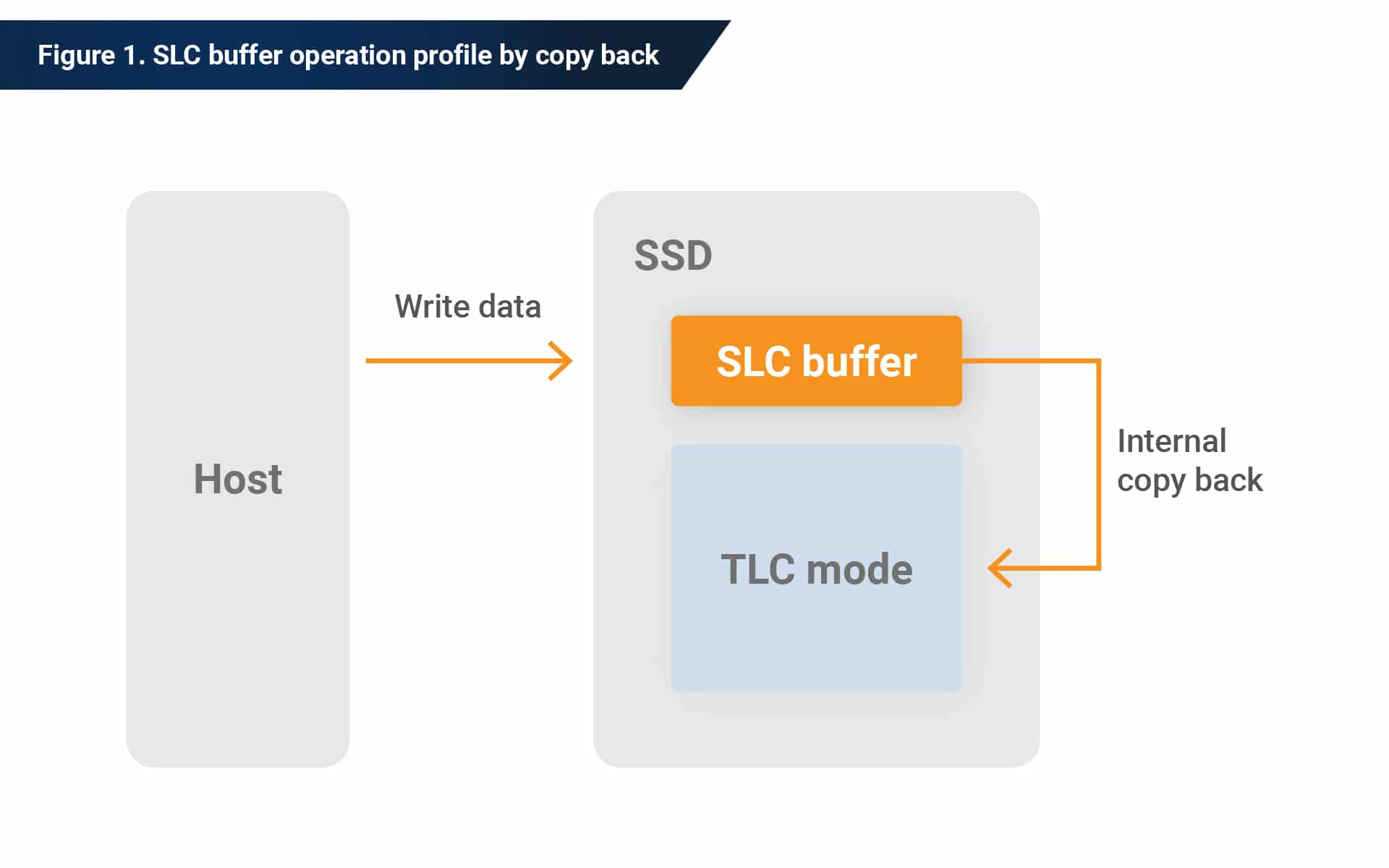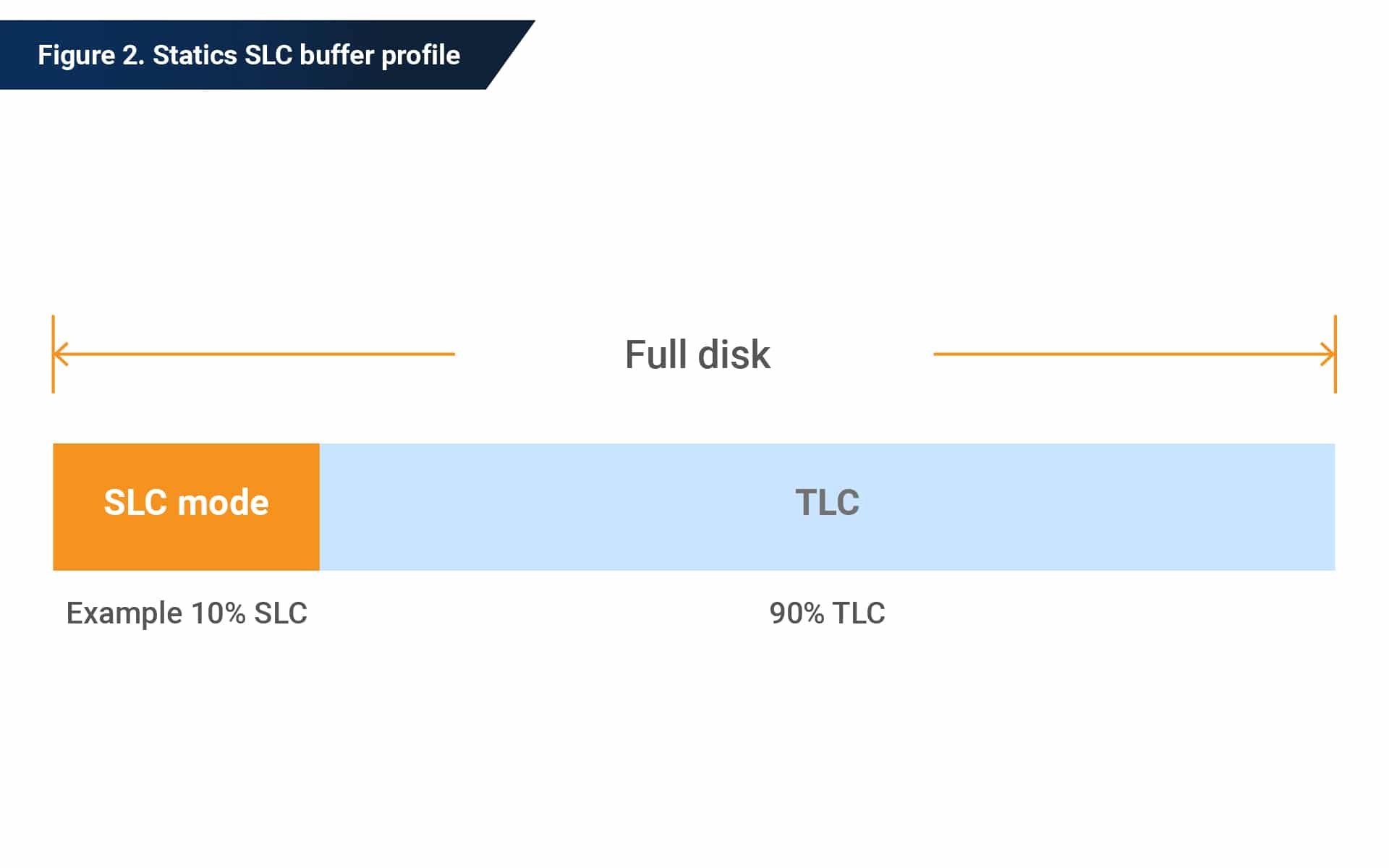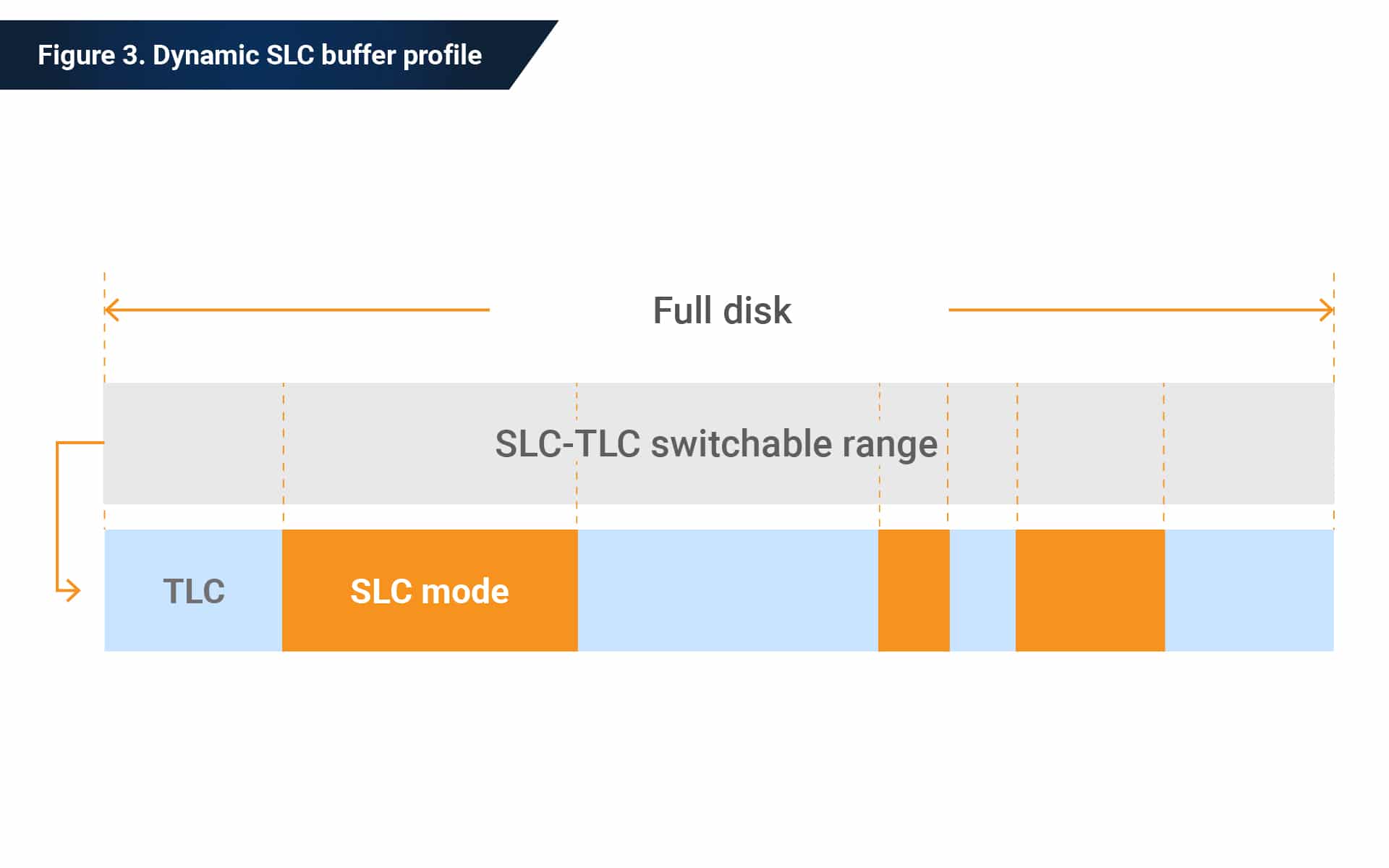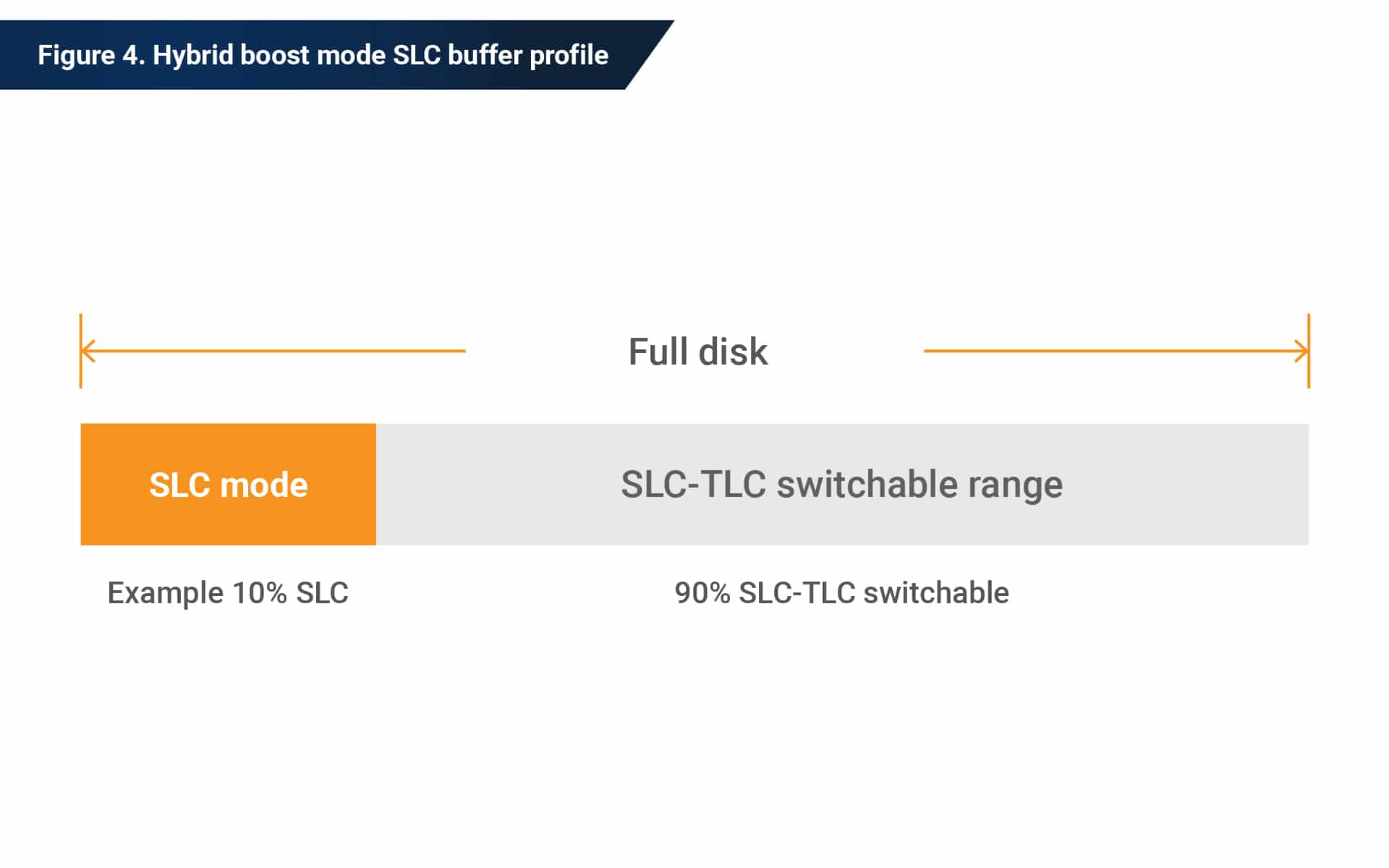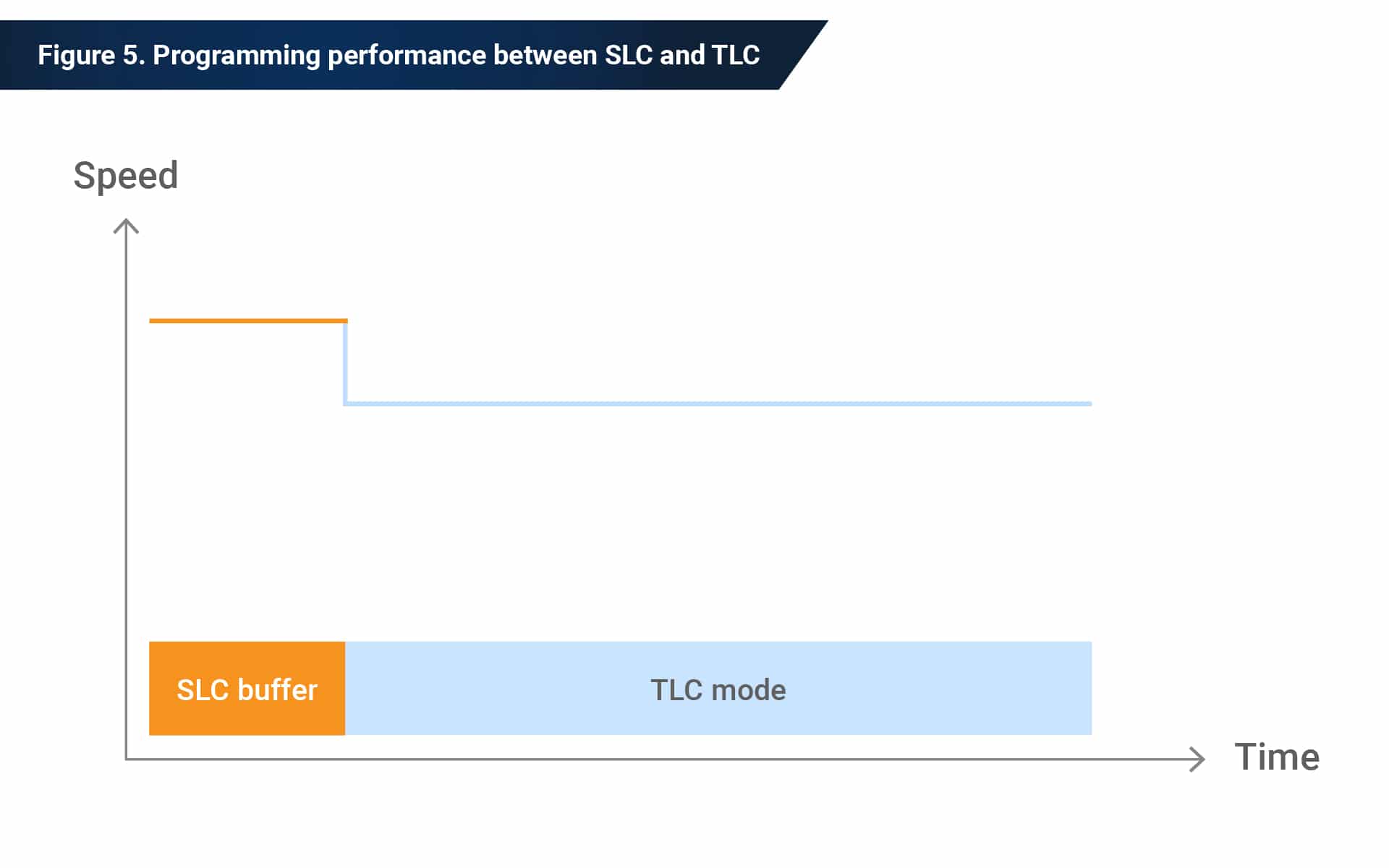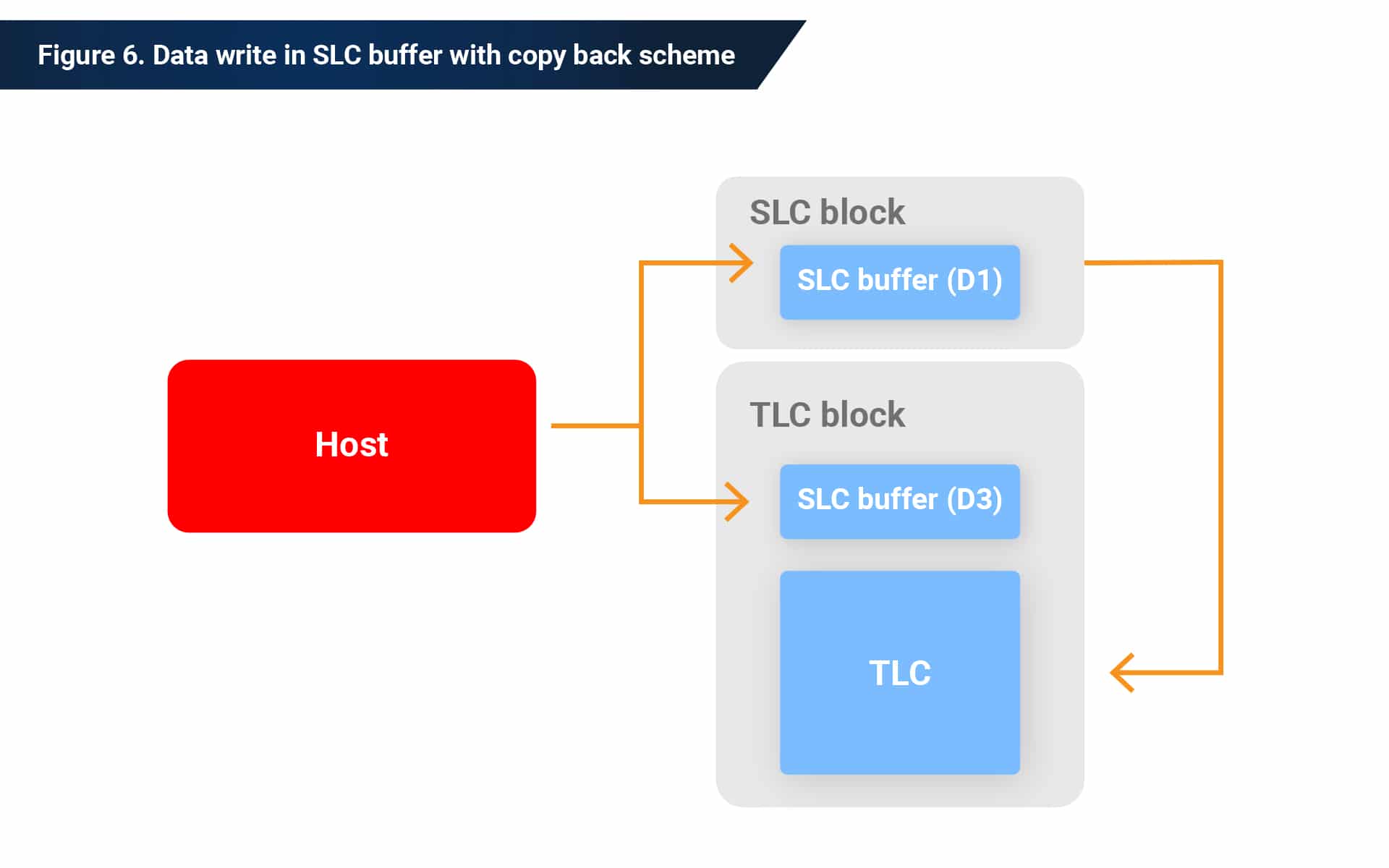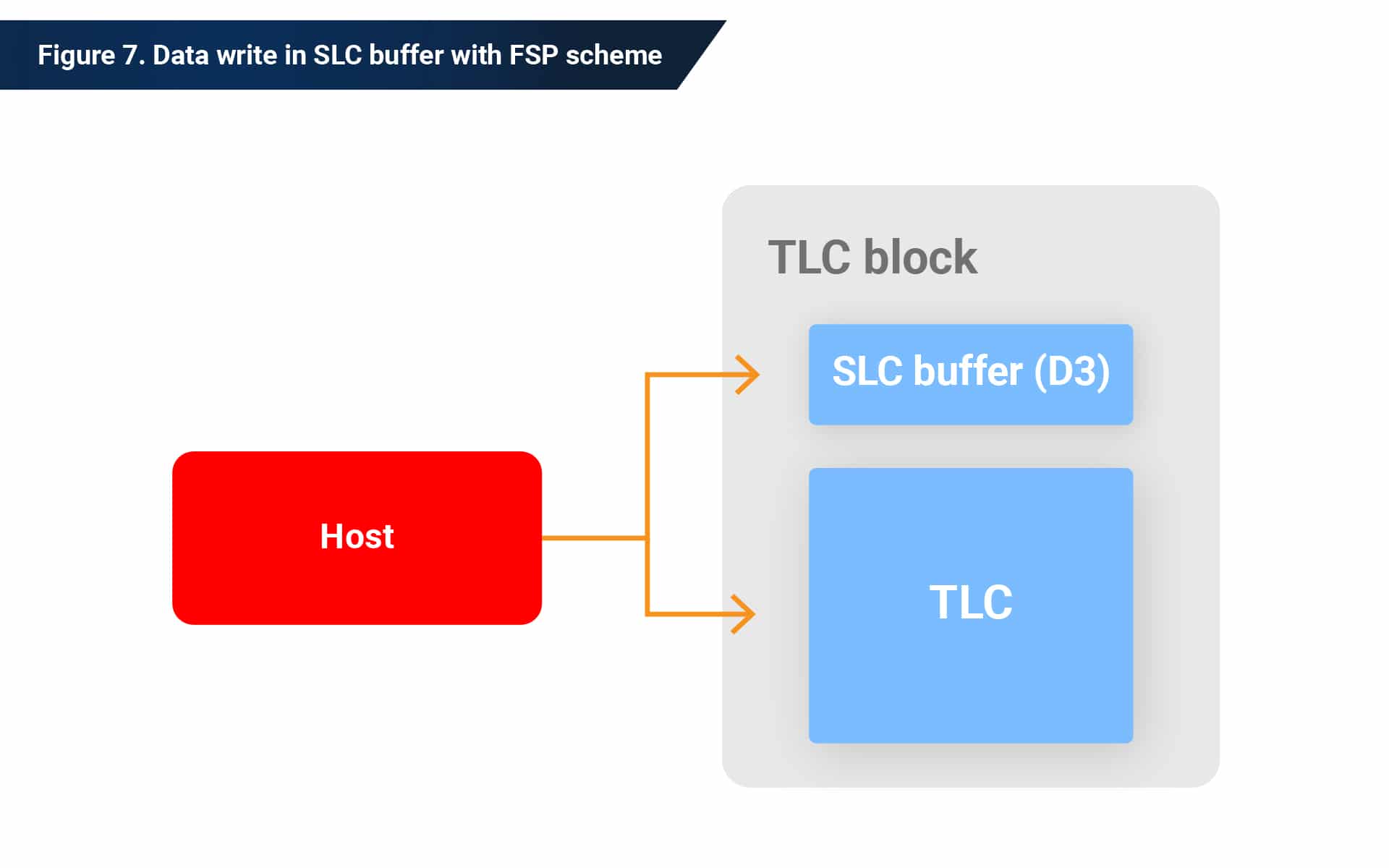The use of an SLC buffer was adapted along side the rise of 3-bit per cell (TLC) flash to enhance the write speed.
The SLC buffer splits from the TLC array and instead executed by an SLC mode command sequence. The SLC buffer capacity is different for various SSD capacities, based on a constant ratio of total SSD capacity. By switching to SLC mode, a disk’s busy time is shorter than TLC mode, allowing for higher performance when running an SSD using the SLC buffer.
About SLC buffer
There are two types of SLC buffer; static and dynamic. The SSD’s firmware can set the initial state of the SLC buffer. Phison’s SSDs define the static SLC buffer as zone D1 and the dynamic SLC buffer as zone D3.
Static SLC buffer (D1)
TLC flash running in SLC mode needs to be separate from the TLC itself. Zone D1 is only while the copy-back operation is active in the TLC SSD firmware operation. The overall SSD capacity determines the capacity of zone D1, the higher the SSD capacity, the bigger the zone D1 zone capacity.
Dynamic SLC buffer (D3)
A dynamic SLC buffer used with TLC flash, meaning that the SLC buffer in zone D3 zone can dynamically use the TLC flash by erasing the count balance scheme. The SSD firmware configures to select the block with the lowest erase count every time the dynamic SLC buffer is processed. The dynamic SLC buffer can be automatically disabled using FW calculations based on flash endurance for different flash types.
Dynamic and static SLC buffers can be used together to further enhance the data programming performance of various input data of TLC, NAND, and SSD applications.
SLC buffer operation flow
Based on flash standards, there are two operational modes available on SSD; “Copy Back” and “FSP(Full Sequence Programming)”.
When an SSD uses copy back, host data moves into zone D1. If zone D1 is full, data moves to zone D3 SLC. When both zone D1 and zone D3 SLC are full, the SSD drive will enter TLC mode. In TLC mode, any data residing in zone D1 SLC flushes to TLC, and host write speed slows.
When an SSD uses FSP, only zone D3 dynamic SLC buffer is used, and host data writes directly into zone D3 SLC. If zone D3 is full, data writes into the zone D3 TLC area.
The major difference between “Copy Back” and “FSP” is that “Copy Back” data needs to go through a zone D1 SLC buffer first and then is then copied from the zone D1 SLC buffer to the zone D3 TLC flash area that includes SSD background operations such as GC. FSP can be a faster option than copy back because data always writes directly to zone D3 without passing through the zone D1 buffer.
Summary
SLC buffer plays an essential role in TLC SSD applications and can deliver higher performance in different programming schemes.

